Leeds's Victorian bear pit in Headingley set to reopen to public
- Published
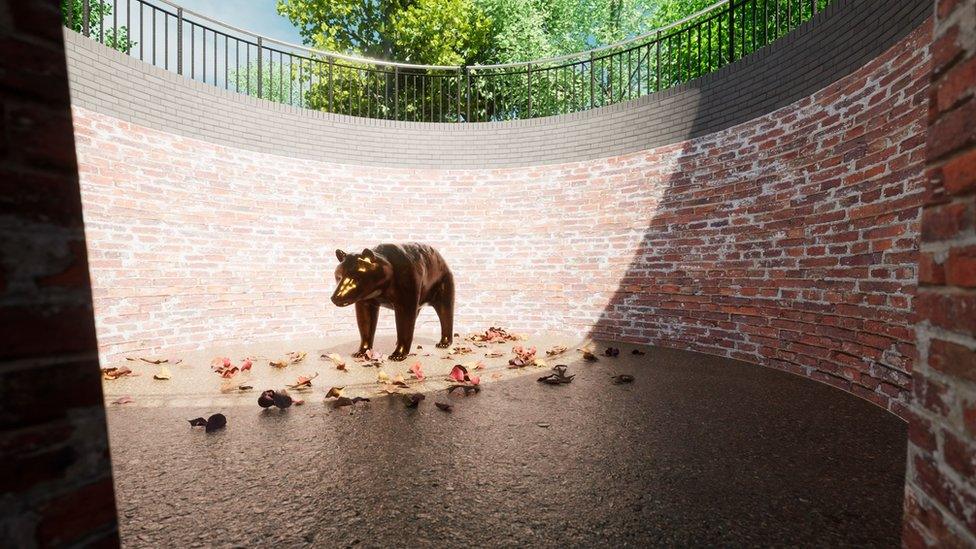
It's hoped the restoration project, which is estimated to cost about £100,000, will take about three months to complete once work begins
A derelict 1840s West Yorkshire bear pit could open again - complete with a bear statue - by the end of 2023.
The bear pit on Cardigan Road in Headingley, Leeds, was once part of Leeds Zoological and Botanical Gardens.
The attraction was open for less than a decade due to financial problems, with the pit, which once housed a brown bear, becoming neglected and overgrown.
Leeds Civic Trust now hopes to restore and open the structure again as a public space for the city.
The charity, which was given ownership of the listed bear pit in a will in the 1960s, said it was looking at spending about £100,000 on the restoration work.
Martin Hamilton, Leeds Civic Trust director, said: "It was the centrepiece of the wider gardens and zoo which occupied land around Cardigan Road, it was a relatively short-lived attraction and obviously animal welfare standards in those days weren't what they are now.
"The vast majority of people wouldn't have been abroad, there were zoos but nothing in Leeds, so it would have been a curiosity and a real draw at the time."
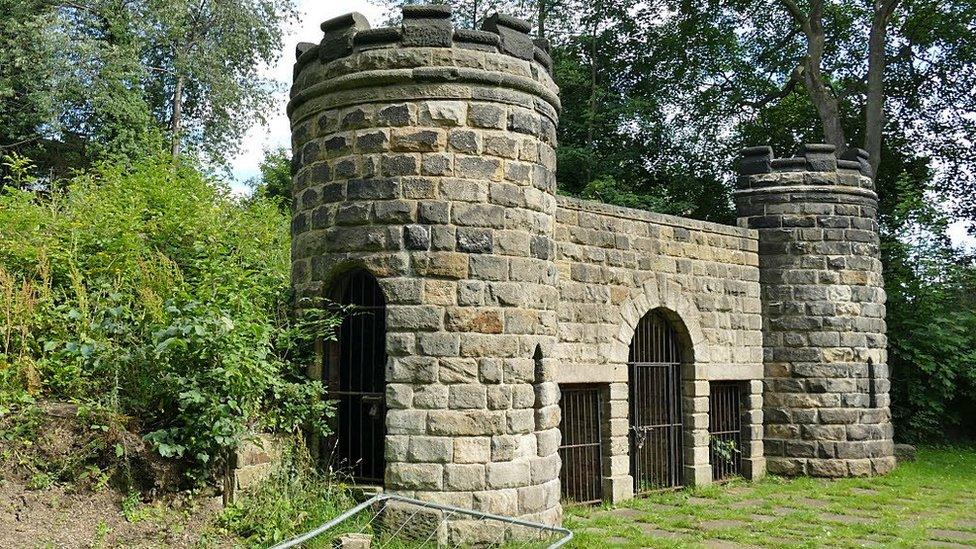
The listed structure required repair work, Leeds Civic Trust said, with land around it becoming overgrown
Headingley's brown bear would have been viewed from the two turrets above the pit, with visitors climbing spiral stairs up to a viewing platform.
Other proposals for the space, including redeveloping the site for office buildings, were never carried forward, the charity said.
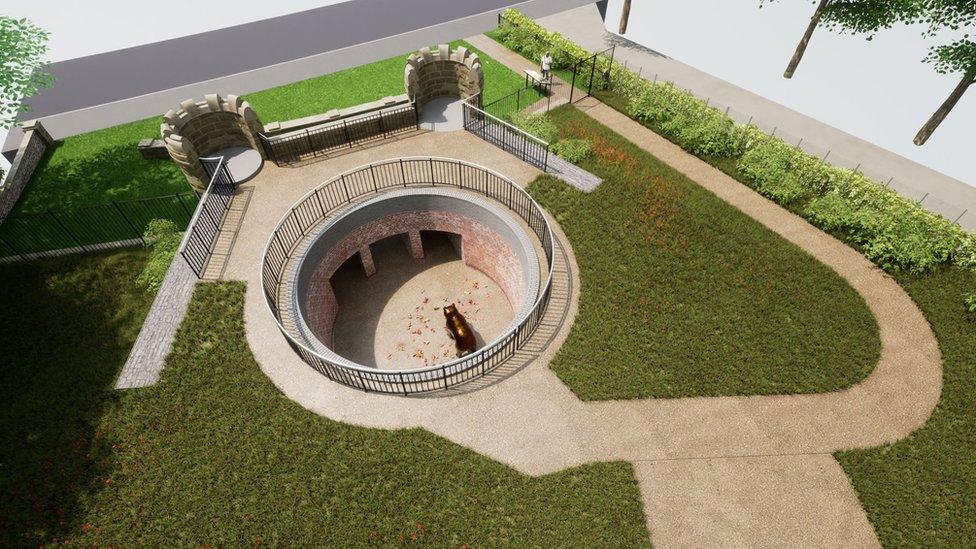
KS Architects said clearance work will open the site up to visitors, with railings installed around the pit
"The option we're left with is to do something positive with it, making it a feature of Headingley and something the people of Leeds can look at and learn about," Mr Hamilton said.
KS Architects said overgrown trees would be cleared to allow for a ramp taking visitors up to the top of the attraction, with railings installed around the pit.
An information board explaining the history of the pit and the wider gardens would be installed, with hopes the entire project should take about three months to complete once started.
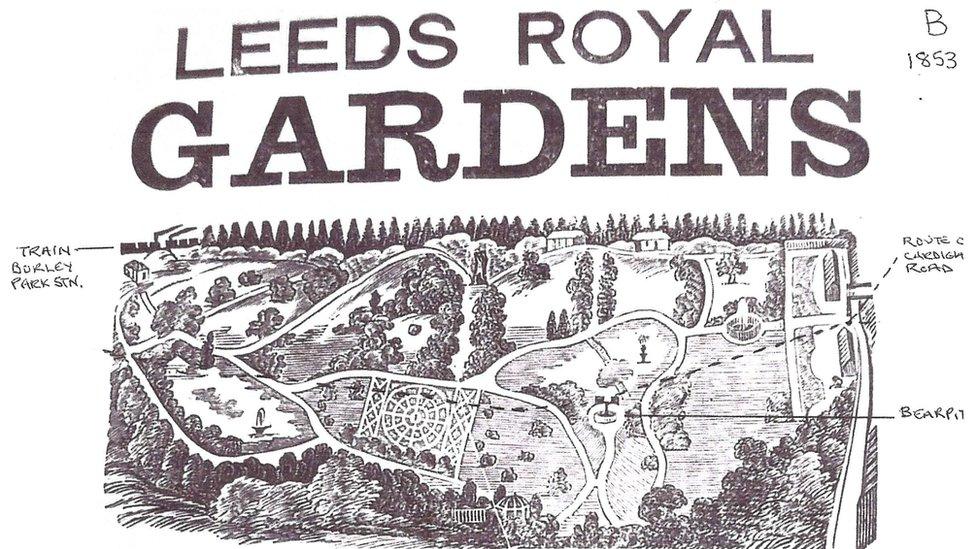
A publicity poster for Leeds Royal Gardens, the name it took after Leeds Zoological and Botanical Gardens, includes the bear pit
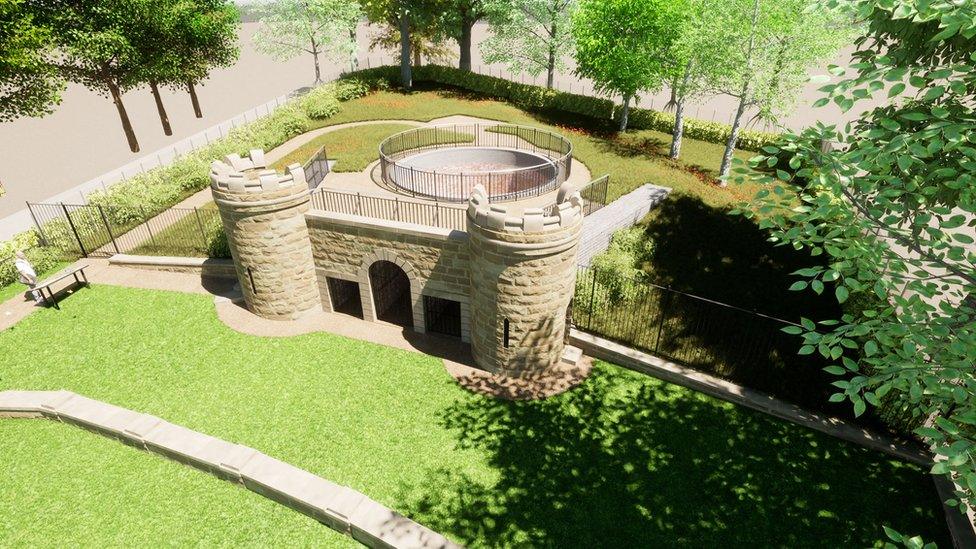
Leeds Civic Trust described the bear pit, pictured as an artist's impression of what it will look like after the project's completion, as one of the city's "curiosities"
"Thankfully visitors will only be able to look down onto a sculpture of a bear rather than the real thing," the architects said.
Bear pits became popular in England in the Victorian-era as interest in exotic animals grew and crowds flocked to see something new, with a similar pit still standing in the botanical gardens in Sheffield, South Yorkshire.
Mr Hamilton continued: "The history of Leeds can be told through the prism of the cloth trade, it could be told through the immigrant communities, but it can also be told through its curiosities.
"It's maybe not something you'd learn about at school, but it's an important story and I'm pleased we can do something about it."

Follow BBC Yorkshire on Facebook, external, Twitter, external and Instagram, external. Send your story ideas to yorkslincs.news@bbc.co.uk or send video here.
Related topics
- Published6 September 2014
